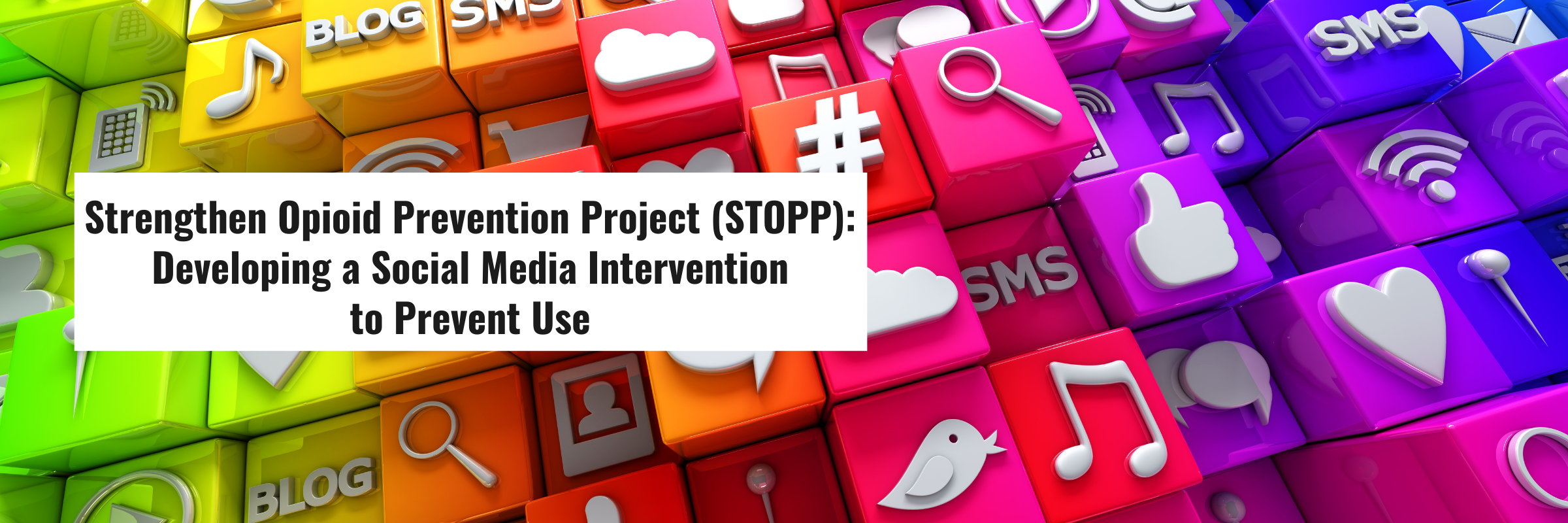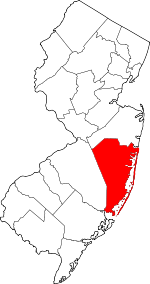
Summary
The skyrocketing use of opiates has become the number one health care crisis confronting New Jersey with a drastic surge in heroin and opiate abuse. Ocean County is the epicenter of a growing opioid epidemic gripping our state. New and innovative ways to prevent substance use in this community must be explored, as current initiatives are ineffective as evidenced by the worsening trajectory. This study provides an innovative and novel approach in opioid prevention among adolescents. It identifies from the adolescents’ perspective, what they believe is important to help prevent opioid use in this population. This will inform the development of a social media intervention (content, format, and delivery) to be tested in a subsequent feasibility study. Lastly, it will develop study measures that will be used to evaluate impact of the social media intervention.
Researchers and Partners
| Cynthia Ayres, PhD, RN, FNAP | Principal Investigator | Associate Professor | Rutgers School of Nursing, Camden |
|---|---|---|---|
| Mary Wunnenberg, EdD, RN, CNE | Co-Investigator | Clinical Assistant Professor | Rutgers School of Nursing, Camden |
| Amy Beth Jordan, PhD | Co-Investigator | Professor, Journalism and Media Studies | Communications and Information, Rutgers University, New Brunswick |
| Corina Lelutiu-Weinberger, PhD | Co-Investigator | Endowed Chair of the François-Xavier Bagnoud Center, Assistant Professor | Rutgers Biomedical and Health Sciences--School of Nursing |
| Peter T. Rosario, CFRE | Community Partner | President and CEO, Ocean County YMCA and Co-Director, Toms River Family Health and Support Coalition | Ocean County YMCA |
| Pamela Capaci | Community Partner | CEO | Hope Sheds Light, Inc |
About this Project
Initial Approach
 The idea of this study emerged from the findings of a previously funded study by Ayres and Wunnenberg, in collaboration with community partners, that examined the social context and situational circumstances surrounding individuals’ initial substance use.
The idea of this study emerged from the findings of a previously funded study by Ayres and Wunnenberg, in collaboration with community partners, that examined the social context and situational circumstances surrounding individuals’ initial substance use.
Specifically, this study sought to gain a better understanding of the specific factors related to adolescents’ initial use of opioids, such as the social context and situational factors that led to their first experience of substance use.
The study participants were individuals between the ages of 18 to 25 in recovery to discern key themes related to their first substance use experience. A major theme that emerged in the findings was that the study participants wished they had known more about opioids and what opioid use could do to them. The participants expressed that they wish they had this knowledge earlier to have prevented use. Therefore, this study focused on an earlier age group, between the ages of 15 to 17 in an effort to prevent opioid use.
Although there are numerous substance use prevention school-based programs already being implemented with adolescents, more needs to be done around opioid prevention given the increasing numbers among young adults, especially in Ocean County. Therefore, we recognized that new and innovative ways to prevent substance use needed to be explored as current initiatives are not sufficient as evidenced by the worsening trajectory.
Social media platforms with high engagement of young users, such as Snapchat, Instagram, and YouTube provide a unique opportunity to reach this adolescent population with opioid prevention efforts. To date, there are currently no published studies using these social media platforms to prevent substance use among adolescents. In addition, cultural grounding informed our study activities, as adolescents in the community are a part of the iterative, collaborative process of solution-design. As community partners, they are vital in the design and implementation of the social media intervention as potential contributors to the solution of the opioid crisis in this community. In this study, adolescents were able to identify the “what, when, where, and how” to engage this population using social media as an intervention to prevent opioid use.

Wikipedia image
The partnerships in this project developed as a mutual interest and strong commitment to addressing the opioid crisis in our community. Ocean County is the epicenter of a growing opioid epidemic gripping our state. It has one of the highest numbers of overdose-related deaths in New Jersey, having more than 200 overdose-related deaths (New Jersey County Health Rankings, 2018). Within Ocean County, Toms River is the highest municipality with substance abuse admissions, with 742 heroin/other opioid treatment admissions, roughly 18% of county admissions.
Our partners also identified that new and innovative ways to prevent substance use in this community must be explored as current initiatives are not sufficient, given the staggering statistics. Of particular note is the leadership role one of our community partners, the Ocean County YMCA, has played in the design and implementation of this study. The CEO and President of this community partner, Peter T. Rosario, CFRE, is also the co-Director of the Toms River Family Health and Support Coalition (TRFHSC). He has been instrumental in assisting us develop partnerships with community constituents, particularly those on the TRFHSC.
We were able to engage other community partners in the implementation of this project, as the TRFHSC is also working on other significant initiatives to address this opioid crisis in our community.
Evolution and Change
Have you adjusted your research goals or methods due to the COVID-19 pandemic?
The COVID-19 pandemic has undoubtedly affected the study’s implementation due to the nature of the research methodology and timing of activities. The primary research method is qualitative, using the focus group approach with adolescents in a face-to-face setting. The planned method was to conduct these focus groups during the school year when students are more readily accessible within the school and in the community organizations in which they participate in. However, last spring Toms River Regional School Districts went completely remote. Scheduled focus groups were cancelled and rescheduled indefinitely at the time, dependent on the pandemic and the reopening of spaces. In working with the high schools in the community, the hope and anticipation of full opening with access to students to recruit and conduct focus groups were again hampered by the school district’s completely remote-only return to school this past fall.
Many community organizations, including our lead partners, were also closed to members and/or had access limitations due to the State’s Executive Orders and social distancing. Limited or no communication with community constituents compounded our ability to progress with our study’s implementation. Challenges included providing project information to students and parents, obtaining signed student and parental consents, conducting focus groups, and providing the gift cards after participation in a virtual space. These challenges impacted our progress, however, modifications were made accordingly and we have adjusted as able. Additional challenges unique to this study are those related to the virtual nature of these focus groups and the sensitive nature of the topic discussed.
Results and Findings
Valuable feedback around the nature of the questions to include in subsequent focus groups were obtained from the Teen Advisory Board. Based on this feedback, a focus group discussion guide was developed and six virtual focus groups with adolescents between the ages of 15-17 were conducted. Preliminary findings provide information around the best approach to develop a social media intervention, based on the adolescent perspective. Study participants provided insight of the “what” to include. Across the focus groups, the adolescents identified the importance of having someone their age or close to their age who is in recovery to talk about their experiences. The participants in our study indicated that having someone older talk about or relay their experiences does not resonate with them.
 One major recurring theme consistent across the focus groups was the role mental health plays in opioid use. Study participants identified the importance of providing information and resources to adolescents who experience anxiety, depression, isolation, and other mental health issues. There were many more themes that emerged that have helped to inform the content to include in a proposed social media intervention.
One major recurring theme consistent across the focus groups was the role mental health plays in opioid use. Study participants identified the importance of providing information and resources to adolescents who experience anxiety, depression, isolation, and other mental health issues. There were many more themes that emerged that have helped to inform the content to include in a proposed social media intervention.
Study participants also provided insight to the “how, when, and where” to disseminate this content. For example, study participants suggested the use of social media “pop-up ads” to get viewer attention. However, they identified that these “pop up ads” should not look like usual information ads, but something that grabs viewers’ attention to want to make them click and see what it is about.
They also identified the most frequently used and upcoming social media platforms to use and suggested placement of this information. Further analysis is ongoing. However, based on these preliminary findings, select variables were identified as important to include in a subsequent feasibility study to evaluate the social media intervention. We are currently developing a quantitative survey based on this qualitative data collected in the focus groups to test with adolescents. However, modification of the survey methods, including recruitment, consent process, and administration, is also ongoing given the challenges of the pandemic.
Next Steps
Potential Utility
This study has the potential to serve as a model for opioid prevention in other communities nationwide. Use of a social media intervention can potentially reach adolescents in an impactful way using a less-resource intensive approach. However, the proposed intervention needs to be tested to determine its effectiveness in opioid prevention among adolescents. This research will better position us to receive future funding on focused development and the feasibility of the social media intervention around opioid use prevention among adolescents and the testing of the effectiveness of this intervention for community outreach.
Seeking Funding
The findings of this proposed study through CDHW will strengthen our application for future grant applications, providing the preliminary work needed to demonstrate that the proposed research is promising. The findings of our initial study informs this proposed CDHW project. Subsequently, the findings of this CDHW proposed project will further inform the development of our future NIH funding application. This preliminary research is relevant to the development of the social media component needed to strengthen our future proposals.
There are several funding opportunities we are exploring for the focused development and feasibility study. We will be working with the Rutgers Camden School of Nursing research consultant in the development of our subsequent application. Application to NIH includes the R34 planning grant, the R03 small grant, or the R21 exploratory/developmental grant funding mechanism. Although these grants do not require preliminary research, including the findings of the CDHW grant will justify our proposed work and will strengthen our grant application.
Adjusting the Timeline
Given the unforeseen delay in the focus group implementation due to the pandemic, the timeline of our study activities have shifted. This spring we will continue to develop measures to evaluate the impact of the social media intervention and test this survey with 150 adolescents. Therefore, we will administer this survey and conduct our analysis of the survey data this spring. Over the summer, a manuscript will be submitted to disseminate our CDHW study findings. The preparation of an NIH application for a subsequent feasibility study will also occur.
